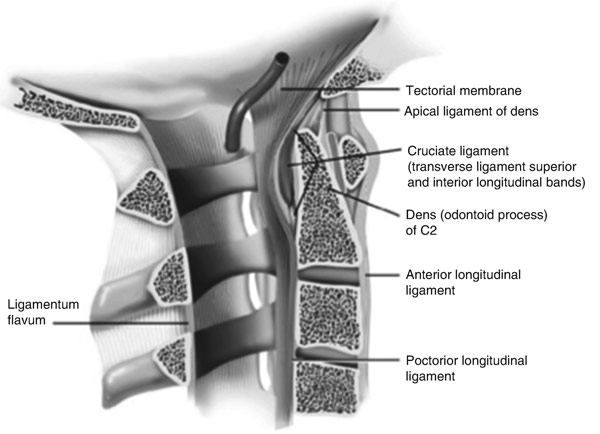Craniovertebral Junction Spine Surgery
Craniovertebral Junction Surgeries
The craniovertebral junction (CVJ) is a complex region that incorporates the occiput C1–C2 portions of the spine. It is a transition between the cranium and the mobile cervical spine. It is highly mobile area with nearly half of the cervical flexion/extension, and rotation occurs at these joints.
Occipito cervical pathologies can result from various conditions including trauma, rheumatoid arthritis and other inflammatory arthropathies, congenital malformations, neoplasms, and degeneration.
Patients with craniovertebral anomaly and occcipitocervical instability usually have three-dimensional abnormalities of the junction with
- Anterior translation of the atlas on the axis
- Vertical subluxation of the odontoid process, and
- Flexion deformity caused by anterior subluxation or dislocation of the occipito atlantal complex on the axis.

This can manifest as wide spectrum of symptoms ranging from mild axial neck pain to frank myelopathy.
Occipitocervical fusion and stabilization is the treatment of choice, for these patients. High degree of mobility and the sharp angle at which the occiput meets the upper cervical spine, makes rigid surgical fixation challenging.
Before the development of specific instrumentation, occipitocervical fusion was limited to in situ fusion, wiring and cable techniques. Forester was the first person to perform occipitocervical reconstruction using fibular strut graft in 1927. Others followed using iliac crest onlay graft after decorticating the surface. However, these techniques need prolonged postoperative immobilization in the form of Minerva jacket or halo vest. Later, wire and plate or rod constructs were developed to create more rigidity in the construct. Now, the screw-plate-rod techniques are developed and routinely used in practice to achieve more rigid fixation and also to obviate the need for postoperative immobilization. The evolution of rigid instrumentation has increased the ability to treat complex craniovertebral disorders in a safe and effective manner.
Careful preoperative planning and meticulous attention to operative landmarks, enables these fixation techniques to be used safely with good clinical outcomes.
Contact
FILL IN THE FORM
FOR APPOINTMENT
For Emergency
We Are Open Always 24 hrs | 365 Days
Call: 8657500555 | 8657500666
